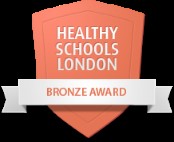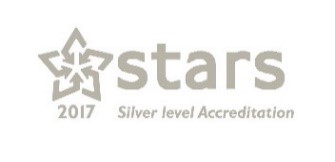SEND & Inclusion
The management of Special Educational Needs & Disability (SEND) at All Saints' is undertaken by Mrs Peach, our SENDCo and Inclusion Leader. Please contact her via the school office if you wish to discuss any issues regarding SEND: office@aspnw2.barnetmail.net
The SEND reforms aim to join up help across education, health and care, from birth to 25. The help is to be offered at the earliest possible point, with children with SEND and their parents involved in decisions about the support their child needs and what they want to achieve. This will help to better outcomes and more efficient ways of working.
The following information aims to describe what All Saints' will provide for pupils with SEND (the All Saints' SEND offer).
SEND Provision at All Saints'
|
Generic SEN Provision at All Saints’
|
|
Assessment, Planning, Monitoring and Review
|
Teaching Environment and Grouping
|
People and Resources
|
- Mrs Peach, SENCo and Inclusion Leader, alongside teachers will organise the assessment and interventions of pupils in the school. This includes liaising with the head teacher about what is necessary with regard to staff and resources.
- All Saints’ has policies in place which address issues to do with equality of access, SEN and behaviour.
- The school uses a variety of assessment tools and observations to determine the needs of the pupils.
- When necessary, the school will liaise with external agencies for assessments of a pupil's needs.
- The school will plan, monitor and evaluate the targets set for pupils in liaison with outside professionals as appropriate.
- An Inclusion Action Plan describes targets reflecting priority needs and how progress is to be measured or reviewed.
- Pupils and parents are encouraged to be involved in provision-planning and progress reviews. This will ensure that appropriate decisions are made about what needs to happen next and that progress and successes can be celebrated.
- Key staff will aim to ensure that pupils understand the targets they are working to achieve.
- Risk assessments are used as appropriate and in discussion with parents/ carers.
- All staff have high aspirations of all pupils.
- Understanding of the potential issues arising from home learning are taken into account and students provided with guidance/ support as necessary.
- Time is allocated for staff to reflect on, discuss and evaluate their practice in relation to students with special educational needs and the rationale that underpins practice, to create a consensus and consistency across the staff team.
- Staff engage proactively with parents and carers of pupils and are open and approachable to discuss issues or concerns.
- Staff are able to monitor and assess access arrangements.
- Targets and programmes recommended by outside professionals and therapists are carefully planned, with staff supported to deliver these.
- Pupils' interests, strengths and favourite activities will be identified and utilised to motivate and engage pupils in learning.
- Analysis of factors likely to exacerbate anxiety/stress for individual students informs systems to address and manage this.
- Individual provision maps/schoolbased plans show all provision.
|
- Teachers and other adults working with pupils at All Saints’ will be appropriately qualified and experienced. Teachers will be supported to gain skills and knowledge in areas that will improve their teaching and support of pupils with SEN.
- In-class support will be delivered in targeted subject areas or areas of particular need; this might include the playground or lunch hall. The nature of the teaching will depend on the needs of the individual.
- Any withdrawn groups will be planned to ensure minimum disruption to the child's inclusion in the classroom.
- Additional adults may be used as follows:
- to refocus the attention of a pupils in a classroom;
- to facilitate understanding of a task or written text;
- to reinforce taught concepts in learning activities;
- to support completion of a written task;
- to encourage a pupil to ask or answer questions and fully engage with their learning.
- Strategies to improve motivation and social communication are embedded in day-to-day learning experiences.
- Arrangements are planned to extend pupils' participation within the curriculum, develop independent learning and extend self-monitoring.
- Parents/carers are offered advice on how best to support the young person at home.
- Strong, positive relationships are established between staff and pupils, seeing this as the starting point for mutual understanding and support for the pupils' learning and wellbeing.
- In line with our school's vision, aims and values, we will ensure that pupils have access to pastoral support for self- esteem, confidence and anxiety management.
- Opportunities are provided to develop and foster positive self-esteem, e.g. buddying, additional responsibilities.
- Multi-agency support is coordinated through a Common Assessment Framework (CAF) as required.
- Class or subject teachers remain responsible for working with pupils on a daily basis.
- The school will ensure that the physical environment is adapted for the individual learning needs of the population of children attending the school.
- Reasonable adjustments will be put in place for pupils with a disability and those whose learning needs require environmental adaptations, e.g. areas for small group teaching for pupils with auditory processing, or hearing difficulties; individual workstations in classrooms to help manage pupils who have difficulty managing their arousal levels; physical space and seating for pupils with mobility needs.
|
- Staff are aware of the needs of pupils through careful transition from year to year and also with liaison (via the Inclusion Leader) with other schools.
- Additional adults work under the direction of a teacher and are clear about what is expected of them.
- There will be differentiation to ensure inclusion and access to the curriculum and a suitable mix of challenge and success across the curriculum to develop the pupil's confidence. Differentiation may include the following:
- adjustment of pace;
- consideration of the order and/or number of activities to maintain attention.
- focused work to ensure subject specific vocabulary is identified and taught.
- strategies to develop organisational skills.
- managing equipment and independence skills. Pupils may have access to ICT equipment and appropriately structured software.
- There is equality of access to activities for all pupils including after school clubs.
- The school's feedback and marking policy describes sensitivity towards highlighting errors and corrections on pupils' learning.
- Learning activities are well organised, structured and planned to promote full access to practical activities.
|
Autism Spectrum
|
All Saints’ SEN Provision for Autism Spectrum Condition
|
|
Assessment, Planning, Monitoring and Review
|
Teaching Environment and Grouping
|
People and Resources
|
|
Please refer to the Generic section.
|
- Low arousal areas may be available within the school to support focused learning as required by the student on the autism spectrum.
- Access to a ‘retreat’ in school which can be used when the pupil’s emotions have begun to escalate out of control and they require a quiet, calm environment.
- Staff are advised how to adopt a calm, empathic approach and to give students with autism time to process and respond to instructions.
- The effect of external environmental factors is taken into account when analysing students’ behaviour that staff find challenging.
- Pupils will have access to support to develop an understanding of their emotional responses and the regulation of their own feelings.
- Flexibility of approach is demonstrated by making adjustments to activities, lessons, timetables and their delivery, as necessary, for students with autism.
- Teachers will encourage pupils to work in a social environment that they can access, while providing them with targets to help improve their social interactions.
- Access to social story learning as appropriate to facilitate understanding of social situations and reduce potential anxiety.
- Access to opportunities to develop positive relationships and work cooperatively with peers using a peer support system or Circle of Friends.
- Pupils have some opportunities for support in understanding and developing social relationships with peers and understanding of social situations.
- There is a named and experienced member of staff - Mrs Peach - with general knowledge about autism and specific information about individual pupils. Good contact is maintained between that person (and other members of staff as necessary) and the Advisory Teacher for the autism spectrum for the school.
- Training about autism at different levels is provided in-house or accessed through external agencies for all teaching and support staff. New staff are informed about the needs of students with autism, ensuring that these staff know where to access immediate support.
|
- The curriculum addresses the learning needs of students with autism (including styles of learning and uneven ability profiles) as well as their social, emotional well-being, their communication needs and life skills.
- Personalised visual supports are provided when appropriate to ensure that the sequence of activities during the day is understandable and predictable.
- Learning activities are well organised, structured and planned and, where possible, advance warning is given of any changes to familiar routines in a way that is meaningful to the student with autism.
- The process and quality of the learning experience (not just outcomes) is assessed from the perspective of the student with autism and considers the particular demands of whole class/group working.
- A range of communication strategies is used to facilitate two-way communication where necessary.
|
Cognitive Learning
|
All Saints’ SEN Provision for Cognition and Learning
|
|
Assessment, Planning, Monitoring and Review
|
Teaching Environment and Grouping
|
People and Resources
|
|
Please refer to the Generic section.
|
- Teachers develop a range of concrete/visual materials to establish concepts and skills with additional adult support as necessary.
- Pupils will have access to in-class support which may present itself in the following ways:
- simplified language reinforced by visual materials and modelling;
- developmentally meaningful visual supports during activities to help students structure and identify stages in a task;
- appropriate methods and materials included in lessons;
- differentiated approaches for content, pace, use of language by teacher, approaches to communicate taught concepts, how learning is recorded and generalised.
- Catch up programmes where they are underachieving.
- ICT equipment and appropriately structured software to support visual access to the curriculum, develop and support basic skills and promote alternative approaches to recording.
- Pupils have access to strategies to develop and extend listening and attention.
- Where required, they have access to simple everyday assistive devices to aid access to the curriculum (e.g. pencil grips, sloping writing surfaces,)
- Pupils may have opportunities to work in a distraction-free environment to assist concentration and learning.
- Pupils have access to curriculum and support groups working with peers of different abilities and access to peers to provide role models for language, communication skills and for cooperative and independent application to task.
|
- Work is targeted at the needs of the pupil ensuring that it is differentiated to cater for those needs.
- School staff are trained in the needs of the pupils that they work with.
- Additional adults supporting learning should be familiar with how the pupil learns, what the pupils individualised targets are and how they can support the child’s achievement.
|
Physical Disability and Complex Medical Needs
|
All Saints’ SEN Provision for Students with Physical Disability (PD) and Complex Medical Needs
|
|
Assessment, Planning, Monitoring and Review
|
Teaching Environment and Grouping
|
People and Resources
|
|
Please refer to the Generic section.
- To initiate and review a health care plan to address the student’s needs in liaison with parents and school nurse.
- Training about PD and medical needs at different levels is provided in-house or accessed through external agencies for all teaching and support staff.
- All staff, including new staff, are informed about the needs of students with PD and medical needs ensuring that these staff know how to support the needs of PD of any individual.
- Reasonable adjustments and adaptations are made to the curriculum and the school environment.
- Accessibility plan is in place as required.
- Training occurs in manual handling, where appropriate.
|
- Teachers will be supported by the SENCo to develop strategies for inclusive practice in the classroom.
- Opportunities and comprehensive resources for motor skill development.
- Flexibility of approach is demonstrated by making adjustments to activities, lessons (including PE), timetables and their delivery, as necessary.
- Teaching takes account of physical and medical needs and outcomes are differentiated to allow for a focus on developing their targets.
- Clearly defined spaces/areas for personal equipment and places of withdrawal are identified and available for therapies, developmental programmes and/or special arrangements for personal hygiene.
- Careful consideration given to the position of pupil with PD in the classroom to allow for maximum independence of movement/access to resources and equipment.
- Pace of teaching takes account of possible fatigues and frustrations experienced by the pupils with PD.
- Clear procedures are in place to ensure the management of medications.
|
- The curriculum actively promotes positive attitudes to disability.
- The curriculum addresses learning needs (including styles of learning and uneven ability profiles) as well as their emotional well-being, their communication needs and life skills.
- There is equality of access to activities, including the extended curriculum, PE, school trips and visits.
- Strategies to facilitate the pupil’s ability to understand and make needs known e.g. visual supports, signing as appropriate.
- Flexible support in school to include dressing/undressing, toileting needs and medical needs.
- Alternative ways of recording used across the curriculum.
- Differentiation techniques widely used to promote full access to practical activities.
|
Sensory Impairment
|
All Saints’ SEN Provision for Students with Sensory Impairment
|
|
Assessment, Planning, Monitoring and Review
|
Teaching Environment and Grouping
|
People and Resources
|
|
The following table contains details of the support ordinarily available in schools for children and young people who have a
- hearing impairment (HI). This includes all conditions that result in a child or young person being unable to hear sounds within the range of frequencies present in normal speech at volumes less than 20dB louder than average. The hearing loss may be temporary or permanent, affect one ear or both and may only affect certain frequencies of sound. In addition, the support described is also available to children and young people who have Auditory Neuropathy Spectrum disorder, even when there is an absence of hearing loss.
- visual impairment (VI), which is not correctable by glasses. Visual impairment ranges from mild partial sight to blindness. Visual difficulties take many forms with widely differing implications for a student’s education. Some students are born blind; others lose their sight partially or completely as a result of accident or illness. In some cases visual impairment is one aspect of a multiple disability.
|
|
As detailed in the SEN ordinarily available school offer.
Additionally:
- As required, staff have opportunities to engage in training in order for them to understand the effects of HI/VI on a child and young person’s development, the impact on learning in a classroom, how to manage personal and specialist equipment.
- Most children with a HI/VI will have been diagnosed at the pre-school stage and will already have accessed some level of support.
- Any concerns over hearing and/or vision will be discussed between parents/carers and school staff with a view to getting medical advice via school nurse, GP and, if necessary, referrals to appropriate consultants i.e. audiology and ophthalmologist.
- The HI/VI Specialist team will liaise fully with the health services, to interpret medical advice and identify how this may affect a child’s HI/VI. They will then advise school staff how best they can support the child.
- Detailed analysis of the pupil’s strengths and weaknesses in relation to the pupil’s HI/VI, curricular skills, social/emotional development and physical skills.
|
- Barnet HI/VI team works closely with the pupil, school staff, parents/carers and all professionals involved to ensure that the pupil has full access to the curriculum and school life.
- Provision of additional support in-class, small group work and individual withdrawn support.
- Access to a HI/VI ‘friendly’ class and school environment e.g., optimal seating position, acoustic environment, specialist equipment.
- Programmes of mobility and independence skills, as required.
- Access to support approaches to promote social interaction with peers.
- Support throughout transitions.
- Access to teaching resources and activities to assist the pupils learning and acquisition of skills.
- Access to the VI/HI teams to support with maintenance and advice on the use of specialist equipment.
|
- School staff should be aware of the pupil’s HI/VI and its implications in the school setting. Therefore, the curriculum addresses the learning needs of students with HI/VI as well as their social, emotional, communication and physical skills.
- Use specific techniques which have been suggested by Advisory Teachers.
- Implement a school-based programme for supporting the pupil’s speech and language development that has been designed by the school’s Speech & Language Therapist.
- Reasonable adjustments to the normal arrangements. These may include the following:
- accessibility of printed materials (font size, contrast etc), use subtitles on audio-visual presentations such as educational television programmes;
- use of visual/auditory/tactile stimuli;
- adjust seating plans or reorganise the layout of classrooms or swap the room in which the child’s class is taught for one where the environment is more favourable;
- consider purchasing specialist equipment. For VI this may include the following: large screen monitors, IT resources, dark pens/ pencils, dark lined paper/books, magnifiers, large print materials (e.g. books), Braille & tactile resources, sloping boards for writing/reading. For HI this may include the following: equipment in assemblies and large group meetings such as public address systems or use of the pupil’s personal FM radio aid system to ensure that the pupil can hear.
- Support, advice and information to parents/carers on a range of matters including relevant organisations.
|
Social, Mental and Emotional Health
|
All Saints’ SEN Provision for Social, Mental and Emotional Health
|
|
Assessment, Planning, Monitoring and Review
|
Teaching Environment and Grouping
|
People and Resources
|
|
Please refer to the Generic section.
- Assessments of strengths and weaknesses of social and emotional development using observations and/or behavioural checklists to establish a baseline.
- Recording and tracking of the frequency, intensity and duration of behavioural incidents using e.g. antecedent, behaviour, consequence (ABC); functional analysis.
- Advice/assessment/analysis of strengths and needs from specialists and outside professionals e.g. Advisory Teacher; CAMHS; Educational/Clinical Psychologist; Psychotherapists/Primary Project.
- Clear arrangements in place with local health partners and other organisations for making referrals to CAMHS.
|
- Behaviour Policy reflecting the ethos of the whole school community.
- Teaching and learning environment audited frequently and changes made to support positive behaviour and learning, e.g. a low stimulus work area; out of class work area; access to additional support.
- Access to grouping that enables pupils to work with peers who provide good role models for social interaction and appropriate behaviour.
- Staff adapt teaching approaches (e.g. cuing the pupil with name and individual instruction).
- Pupils are provided with the opportunity to reflect on their own behaviour (e.g. use of a self-monitoring technique/discussions).
- Pastoral support in line with the school’s vision, aims and values to supplement usual pastoral care arrangements.
- Social, emotional aspects of learning embedded across the curriculum and directly taught through PSHE and in small groups.
- Individual coaching and/or therapeutic support from trained teachers or external agencies as appropriate, linking with professionals e.g. CAMHS, the Educational Psychologist and external bodies to ensure quality assurance and safe practice.
- Relevant training and CPD is made available as required e.g. Attachment Theory; Nurture Principles; response to School Anxiety; awareness of Mental Health and Emotional Wellbeing.
|
- Additional targets may be set through a Behaviour Management Plan (BMP) in consultation with parents/carers, relevant professionals and other agencies.
- Flexible approach to curriculum delivery to take into account their needs, strengths and preferred ways of learning.
|
Specific Learning Difficulties
|
All Saints’ SEN Provision for Specific Learning Difficulties including Dyslexia (literacy), Dyscalculia (numeracy) and Dyspraxia (motor)
|
|
Assessment, Planning, Monitoring and Review
|
Teaching Environment and Grouping
|
People and Resources
|
|
Please refer to the Generic section.
- In addition, recognised individual reading, spelling and numeracy tests.
- A recognised assessment of the underlying cognitive skills (e.g. speed of processing, working memory, phonological awareness).
- Alternative methods of assessment such as miscue analysis.
|
- Staff are skilled and able to develop the awareness of all specific learning difficulties (SpLD) and support pupils accordingly.
- Teaching Assistants (TAs) are trained in meeting the needs of pupils with SpLD and the use of multi-sensory teaching approaches.
- Pupils will have access to individual and small group tuition either within the classroom and/or on a withdrawn basis working to targets.
- The school has arrangements to support the use of appropriate approaches/materials to include the use of multi-sensory teaching strategies, such as a focus on phonological awareness.
- Pupils may have access to an adult who can provide regular support as follows:
- to develop attention and listening skills;
- to support group work linked to learning areas;
- to support practical work with concrete/ visual materials to establish concepts and skills;
- to support over-learning and revision to support pupils who have difficulty with recording to develop personal organisation in response to timetabling/managing equipment/independence skills.
- Activities will take place to develop fluent handwriting using a structured programme and addressing underlying fine motor skills and/or opportunities to develop word-processing skills.
|
- All teachers will be aware of the implications and impact of specific learning difficulties on the way a pupil learns. Teachers adapt curriculum planning and delivery to accommodate to the pupil’s preferred way of learning.
- Pupils will have access to teaching and learning which will be multi-sensory and well-structured with opportunities for repetition and consolidation of skills.
- Strategies and support materials will help compensate for weak working memory.
- Support/strategies/interventions (as required) will ensure the following:
- a structured approach to teaching reading and phonics;
- a structured approach to teaching spelling ;
- acknowledgement of a variety of learning styles within a lesson;
- the use of multi-sensory teaching strategies including visual structure;
- the employment of various methods of recording encouraged e.g. mind mapping, ICT;
- that the pupils strengths as well as difficulties are known to all those working with him/her.
|
Speech, Language and Communication Needs
|
All Saints’ Provision for Speech, Language & Communication Needs (SLCN)
|
|
Assessment, Planning, Monitoring and Review
|
Teaching Environment and Grouping
|
People and Resources
|
|
Please refer to the Generic section.
|
- Access to a learning context that facilitates a pupils’ exposure to language and gives consideration to the organisation of space and provision of materials. This includes the following:
- learning areas and resources that are clearly defined and labelled with pictures and words;
- space for privacy/quiet areas that can be used for ‘down time’, smaller group activities and provides a less visually distracting area;
- small group/individual work facilitated by an adult, within the classroom or on a withdrawal basis;
- an appropriate range of fiction and non-fiction books;
- attempts to actively include all students in small group activities;
- opportunities for pupils to engage in high quality conversations with peers and adults.
- All staff are aware of the importance of high quality interactions with pupils including the following:
- acknowledging the pupils needs, such as getting down to the child’s level, pacing, simplifying language used, and confirming contributions;
- supporting them in developing their language skills such as labelling and using appropriate open-ended questions;
- asking questions which help pupils to think through a response;
- using visual supports to reinforce language including symbols support, visual timetables, pictures and props;
- encouraging and praising non-verbal communication such as good listening skills;
- ensuring that the classroom is an “asking friendly” setting to encourage questions.
- Targeted support for pupils may address the following:
- specific SLCN such as vocabulary development, narrative skills, comprehension and inference, use of language, sentence structure, the speech sound system, sequencing and active listening skills;
- social use of language skills;
- organisational and sequencing skills;
- curriculum skills;
- social, emotional and behavioural skills related to SLCN.
|
- Advice will be sought from professionals, including Speech and Language Therapist, on interventions or other adjustments that need to be made in the classroom. This may include direct involvement in the school or in the clinic.
- Access to additional ICT/audio-visual to support learning.
- A range of strategies can be used, including the following:
- resource production;
- social language skills;
- support in decoding language;
- specific language teaching;
- organisational strategies.
|
Barnet Local Offer
Barnet's Local Offer gives children and young people with Special Educational Needs and Disabilities (SEND) and their families information about education, health and care services, leisure activities and support groups in their local area.
Please click on the link below for the Barnet Local Offer:
Barnet Local Offer
Barnet SENDIASS
Barnet Special Educational Needs and Disabilities Information Advice and Support Services (formerly Parent Partnership Barnet) offers free, confidential, impartial information, guidance, advice and support for young people and parents/carers of children with special and additional educational needs via telephone or face-to-face meetings.
North London Business Park (NLBP),
Oakleigh Road South,
London N11 1NP
Telephone: 020 8359 7637
Email: SendIASS@barnet.gov.uk







